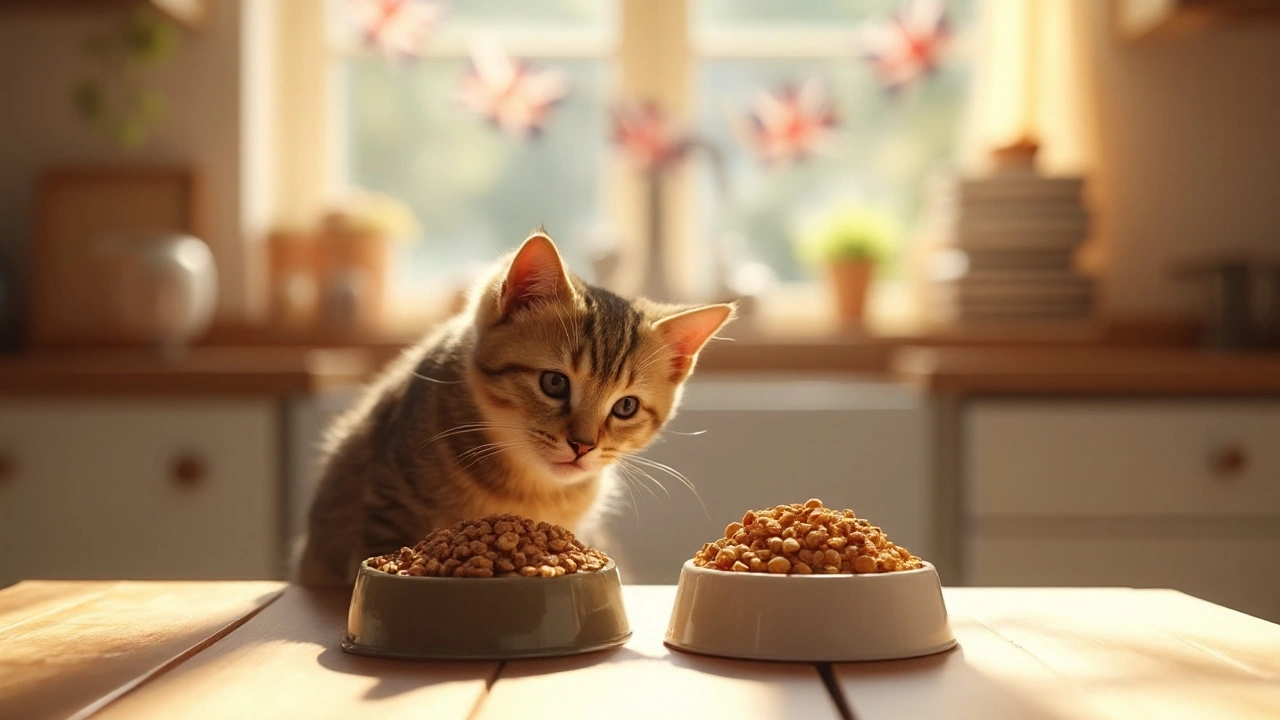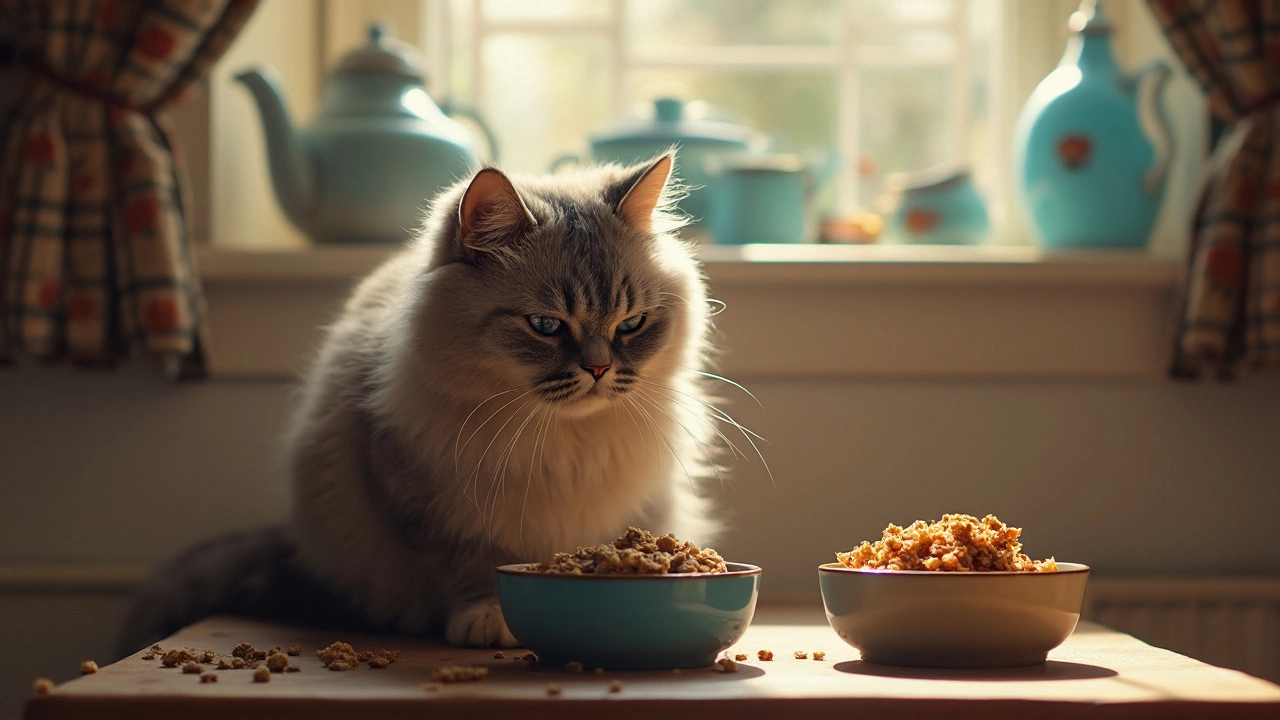Wet Cat Food: Why It’s Great for Your Kitty
If you’ve ever watched a cat lap up a bowl of canned goodness, you know there’s something special about wet cat food. It’s not just about the flavor – the moisture helps with hydration, the texture satisfies their chew instinct, and the protein boost keeps them strong.
Most dry kibble is low in water, so cats that only eat dry can end up drinking less than they need. Wet food adds up to 70‑80% water, which is a simple way to keep your feline hydrated without forcing extra water intake. This is especially useful for older cats or those with kidney concerns.
Choosing the Right Wet Cat Food
When you’re picking a can, look for a short ingredient list. The first item should be a real meat source – chicken, turkey, or fish – not a vague “meat by‑product.” Real meat means more protein and fewer filler carbs.
Check the guaranteed analysis. A good wet food usually has at least 8% protein and less than 2% carbs. Too many carbs can lead to weight gain, especially if your cat is indoor‑only.
Watch the grain content. Some cats digests grains fine, but many do better without corn, wheat, or soy. Grain‑free doesn’t always mean better, but it eliminates common allergens.
Read the label for added vitamins and minerals. Taurine, an essential amino acid for cats, should be listed. Without enough taurine, cats can develop heart issues.
Feeding Tips and Storage
Start with the serving size on the label. If your cat seems hungry after a meal, you can add a spoonful of water or broth (no onion or garlic) to stretch the portion without adding extra calories.
Serve wet food at room temperature. Cats often reject cold food straight from the fridge. A quick warm‑up in the microwave (10‑15 seconds) makes the aroma more inviting.
Don’t leave opened cans out for hours. Once you’ve opened a can, cover it and refrigerate. Use within 24‑48 hours to keep it fresh and safe.
If you’re switching brands, do it gradually. Mix a small amount of the new food with the old, increasing the new proportion over a week. This helps avoid tummy upsets.
For cats on a weight‑loss plan, choose a low‑calorie formula and stick to measured portions. Pair wet meals with a small amount of dry kibble for dental benefits, but keep the total daily calories in check.
Finally, keep an eye on your cat’s litter box. A healthy cat on wet food should have firm, regular stools. If you notice diarrhea or constipation, try a different brand or talk to your vet.
Wet cat food isn’t a luxury – it’s a practical way to boost nutrition, hydration, and enjoyment in your cat’s diet. With the right choices and a few simple habits, you’ll see a happier, healthier kitty in no time.

Wet vs Dry Cat Food: Which Is Better for Your Cat’s Health?
Comparing wet and dry cat food: explore nutrition, hydration, dental health, convenience, and cost to pick the best choice for your cat's well-being.
View more
Pate vs Shreds Cat Food: Which Texture Wins for Your Feline?
Wondering if pate or shreds is better for your cat? Explore texture, nutrition, and tips for picky eaters to help your cat thrive.
View more
Is It OK to Leave Wet Cat Food Out All Day?
Leaving wet cat food out all day is a common practice, but it may not be the best decision for your feline friend. This article explores the pros and cons of leaving wet cat food out, how it can affect your cat's health, and practical tips to ensure their meals remain fresh and safe.
View more